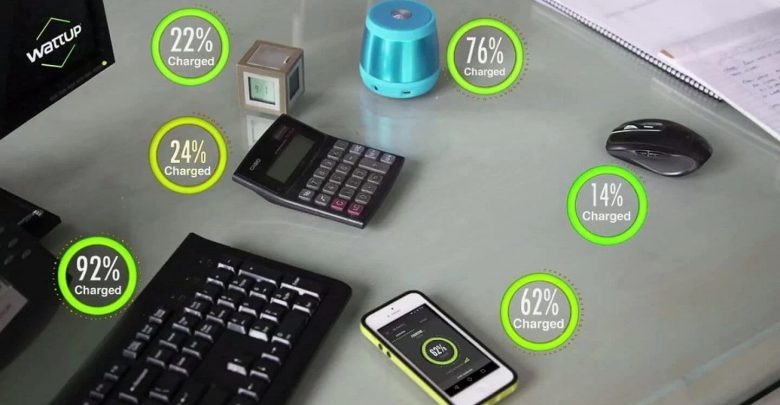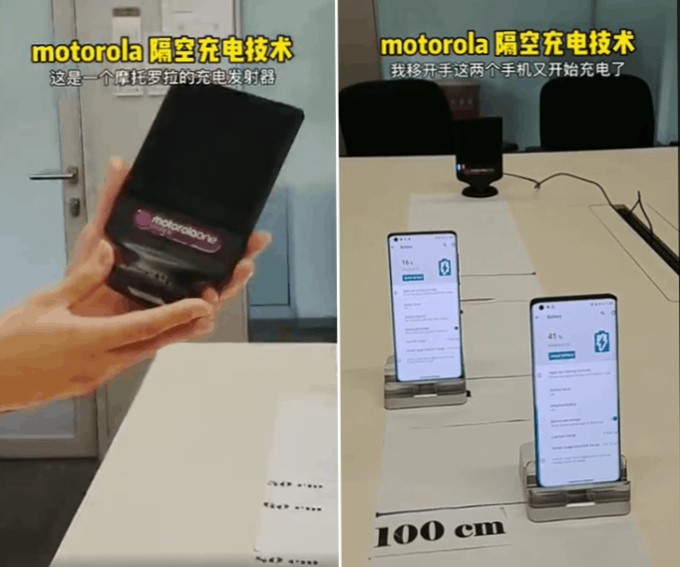
In just the span of two days, there have been two separate incidents where smartphone manufacturers show off different wireless charging systems that can charge phones over-the-air. First it was Xiaomi showing off its Mi Air Charge, and now it’s Motorola, which is teasing a system that can charge phones from as far as 100cm away. Not only that, but we saw the wireless charger even charging multiple phones at the same time.
Chen Jin, the General Manager of Lenovo China Mobile Phone Business Department posted a video on Weibo before Xiaomi’s big announcement. The video demonstrates the company’s true wireless charging tech.
Lenovo calls this over the air charging tech ‘Motorola One Hyper’. It’s named after their phone from 2019 Moto One Hyper.
The drawback of the technology of the Lenovo subsidiary is that it can charge from just a one meter distance, provided nothing stands in the way between the charger and the device. So a direct line of sight is required. When comparing it with MI charge, you can stand between the charging block and your device, and still be able to charge the phone.
According to the official video, two Motorola Edge phones (likely modified for the test) are placed in a standing position 80cm and 100cm away from the charger, respectively. They immediately start to fill up the battery, but once a person places his hand on the charger, the process stops.
As mentioned earlier, the charger is called Motorola One Hyper and while the technology is based on the Qi standard, the company said it is actually better. There could be seven phones, charged simultaneously, but Motorola does not give any actual numbers such as the charging rate of the device and whether all phones can have the same speed or they share the charging capacity.
This alleged showcase involves what could be this company’s own operational transmitter prototype, apparently capable of charging 2 (presumably modified) Edge-series devices positioned 80 to 100 centimetres away from it, unless an object (including a human hand, as in this case) was placed between them. This system may be capable of charging up to 7 separate devices at once, although the rate at which that happens was not covered here.
The video continues with a demonstration of how charging halts when a person’s hand is placed in front of the charging station. This shows that Motorola designed the system to halt charging when it detects a person move in front of the station, likely for health reasons.

This video, should it prove genuine, thus highlights a potentially serious drawback of remote wireless charging. Its reliance on clear space between receiver and transmitter could ultimately render it as finicky as everyday wireless charging can be.
Unlike Xiaomi, Motorola has not appeared to share additional details on how its no-contact wireless charging technology operates. While the company is teasing users on Weibo by asking them if they’d like to see the technology in a future Edge series device, they haven’t confirmed if they are ready to bring this to a commercial product. The implementational and structural problems that need to be overcome are well-understood, so we’re definitely interested in learning how Motorola is approaching this problem.

